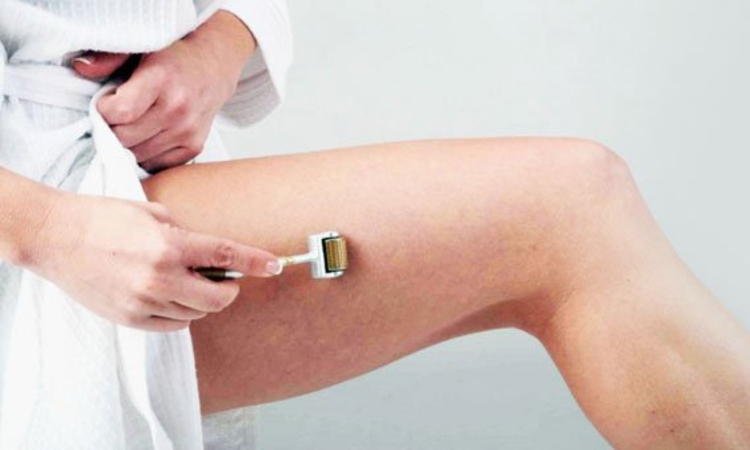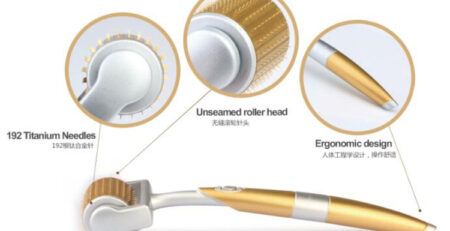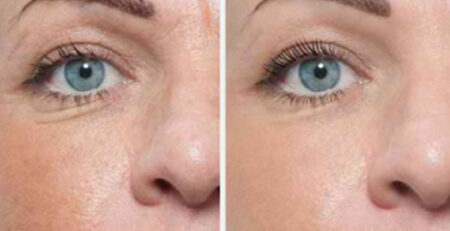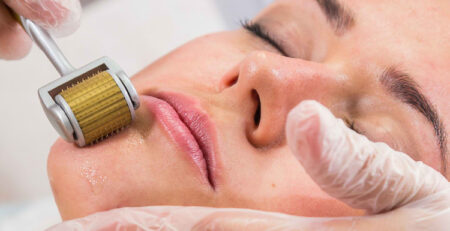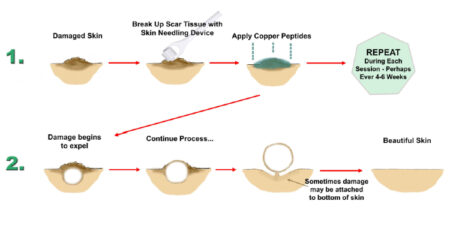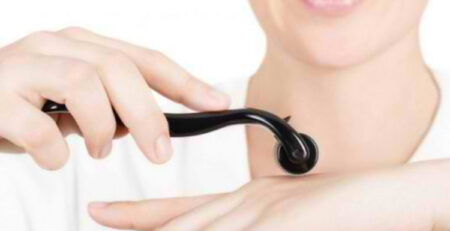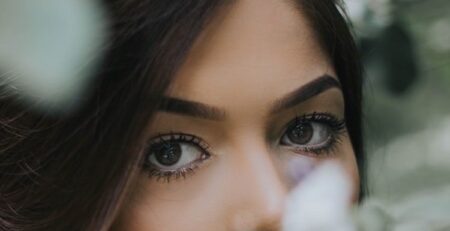Varicose Veins and Spider Veins After Derma Rolling Therapy?
Can Dermarolling therapy cause the appearance of varicose veins and spider veins? Is there any way that dermarolling therapy can cause an effect on the blood vessels? If it causes varicose veins and spider veins, will it fade away after the procedure?
Or the other way around, can derma rolling or microneedling help in getting rid of varicose veins and spider veins?
These are some of the interesting questions that you can find on every derma roller forums. Is there any link between the formation of varicose veins and spider veins to the use of microneedles?
Before answering these questions, let us know first, the difference between varicose veins and spider veins and how they are formed.
The Formation of Varicose Veins and Spider Veins – Will Microneedling Help?
Varicose veins are enlarged and gnarled veins. Any vein can become varicose but the most commonly affected veins are those that are found in your feet and legs. Veins become enlarged because of walking upright and prolong standing increases the pressures of the vein in the lower body.
For some people having varicose veins can cause discomfort and aching pain. More often than not, varicose veins can lead to a more serious health problem.
Varicose veins can be a sign of an underlying health problem such as circulatory in nature. The management of varicose could be surgical depending on the extent of damage to the veins.
Spider vein on the other hand is a mild and common variation of varicose veins. It is commonly found on the lower limbs and around 41% of women over 50 have spider veins.
Both cause cosmetic concern.
Sclerotherapy is a traditional treatment use for spider veins. It is a low-cost treatment but it may cause an adverse side effects. Lasers are also known as a good treatment, but it also has a substantial complication. The lower efficacy rate of laser therapy makes it a limited treatment option for spider veins.
A new and alternative option offered for the treatment of spider veins involved a low voltage current which is delivered using an insulated micro needle with beveled tip. This novel approach has minimized the adjacent tissue damage and has improved the efficacy of the treatment. Microneedling is a low cost treatment with lower level of complications.
Studies have shown that microneedling has comparable results with laser treatment and sclerotherapy making it a valuable alternative to spider veins treatment.
What are the causes of Varicose Veins?
Varicose veins appear because of two main reasons:
- Age
When one gets older, the veins losses its elasticity, so it is more prone to stretch. The vein’s valves may become weak. Thus, it may not be able to perform its function. For example, instead of letting the blood flows toward the heart, it may flow backward.
- Pregnancy
Most pregnant women have varicose veins because pregnancy increases the blood volume in the body. But it decreases the flow of blood from the legs to the pelvis. This is a normal circulatory change to support the fetus. On the other end, the side effect can be enlarged veins on the legs.
Varicose veins may get worse during late pregnancy, when the uterus exerts greater pressure particularly on the veins supplying the lower extremities. Changes in hormone can also play a role. Varicose veins during pregnancy generally resolve even without medical treatment three to 12 months after giving birth.
Risk Factors for the Development of Varicose Veins
The following are the possible risk factors for varicose veins:
- Age
As one gets older, the risk for varicose veins increases.
- Family history
Individuals with family history of varicose veins, have greater chance of having the same condition.
- Obesity
As you get heavier, the more pressure is exerted on your veins.
- Sitting or standing for a long time
Prolong sitting or standing can alter the normal flow of blood which can cause varicose veins.
- Female Sex
Females have higher risk of having enlarged veins because of the hormonal changes caused by menstruation, pregnancy and menopause. Taking contraceptive pills and hormonal therapy can also increase the risk of varicose veins.
Can Derma rolling cause varicose veins?
Now that you know the causes and risk factors of the development of varicose veins, is there any way that derma rolling can cause the appearance of enlarged veins?
There is no current literature that could confirm whether dermarolling therapy can cause varicose veins formation. As of now, the strong causes of varicose veins are either hormonal in nature and or age related.
Derma rolling is a popular skin procedure which is used to treat wide array of skin conditions including acne scarring, burn scars, posttraumatic scars, Rosacea, aging, stretch marks, alopecia and many others. It is quite a new technique which is currently being explored for other potential use in treating wide array of skin diseases.
As of now, a lot of speculations are coming out that it could also work on spider veins which are a milder form of varicose veins.
What are spider veins? These smaller veins are not good to look at. It can be found on the nose, facial skin, legs, thighs and feet. It continues to be a cosmetic concern for some, but only a few have the courage to get it removed.
Most of spider veins are abnormalities in the capillary loops or the horizontal vascular skin plexus. Spider leg veins are composed of ecstatic venous sprouts and feeder vessels in the reticular dermis. The formation of spider veins is still a matter of debate.
But for sure, those with chronic venous insufficiency and higher age are at a greater risk. Occupation and hormonal factors plays in the development of spider veins. Strong genetic factor also plays a role as 90% of patient has positive family history of spider veins.
There are many possible treatments for spider veins including sclerotherapy and laser treatment. In fact, there are even homemade remedies used for treating spider veins. But some are also wondering if dermarolling can help relieve spider veins.
Will Derma Rolling work on Spider Veins?
As of now, there are limited studies which could attest if derma rolling therapy can help resolve spider veins. Some speculate that the potential effects of derma rolling will depend on the size and nature of capillaries or the tiny blood vessels that are visible on the particular skin area.
There are some consumers who tried out using derma rolling in broken blood capillaries or dilated blood vessels. But there is no clear information as to the outcome of the treatment. There are also limited studies to support this claim.
As you now, every person has different idiopathic reactions to skin treatment, it is best to consult your dermatologist for other treatment options available for spider veins. The outcome of the treatment will depend on your skin’s sensitivity.
The study of Mujadzic, and colleagues, published in Aesthetic Surgery Journal last 2015 showed that the development of an insulated microneedle with beveled tip uses low current to minimize adjacent tissue damage. It also offers low cost treatment with minor complications. Thus, the researchers noted that microneedling can offer a valuable treatment alternative to sclerotherapy.
How to Deal with Varicose Veins and Spider Veins?
If you want to try derma rolling on varicose or larger size veins, make sure that you know the size of the roller. If you are not careful it may cause bleeding or may worsen the appearance of capillaries. Although, derma rolling therapy has many uses, it has not yet been proven effective for varicose veins.
You should also be careful in using derma rolling in areas that are prone to bleeding such as the facial area. As derma rolling can cause excessive bleeding.
It is also best if you will consult a dermatologist so you can be given proper advice. As you know the possible causes and risk factors of varicose veins, there is no indication that dermarolling can cause the appearance of varicose veins or spider veins.
Works Cited
Mirsad Mujadzic, MD, Edmond F. Ritter, MD, and Kenna S. Given, MD, FACS. (2015). A Novel Approach for the Treatment of Spider Veins. Aesthet Surg J.

